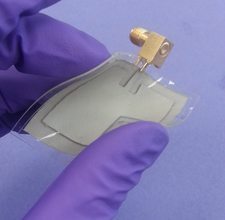Extending mobile connectivity beyond smartphones and tablets is a key goal for companies across the wireless ecosystem, and this spring it appears that wearables may temporarily steal the spotlight from the connected car. Google, Samsung, Motorola, and LG have all announced new wearable technologies this week.
Google has released Android Wear, a collection of Android apps that are appropriate for wearable devices, specifically wristwatches. Android Wear includes Google Now (voice control), smartphone remote control, and health and fitness monitoring. Google is encouraging to developers to download an Android Wear preview so that they can tailor existing app notifications for watches powered by Android Wear.
Motorola’s device unit, which Google is in the process of selling to Lenovo, will be one of the first manufacturers to launch an Android Wear watch. The company is previewing the Moto 360, which looks set to be the flagship Android Wear device. Motorola describes the watch as “everything you need, with a look that you want,” meaning that the device looks like a sleek high-end wristwatch, and incorporates smartphone functionality that makes sense on the wrist. For example, the Moto 360 will enable users to see incoming calls, emails and social media posts. As an Android Wear device it will of course respond to the spoken “OK Google” command, enabling wearers to ask the watch questions verbally.
LG is Google’s other longstanding mobile manufacturing partner, and the Korean company will also launch an Android Wear watch. The LG G Watch is expected to come to market with many of the features found in the Moto 360, but at a lower price point. LG says the watch will be available within the next few months.
Samsung, of course, was early to the smartwatch race with its Galaxy Gear line of watches. Now the world’s leading smartphone manufacturer is making it clear than when it comes to wearables, it wants to own both the hardware and the software. Its new Galaxy Gear 2 is powered by Tizen, the mobile operating system created by Samsung and Intel. Yesterday, Samsung released the software development kit for the Gear 2, encouraging developers to create new apps for Samsung’s wearable ecosystem.
Antennas for wearables
Although the possibilities for wearable technology are just beginning to unfold, two use cases are already clear: the user can retrieve information without using her hands, and the device can send biological information about the user to a server in real-time. Even the tiny antennas used in smartphones may not always be flexible enough for wearable devices, and therein lies a new opportunity for antenna manufacturers. Researchers at North Caroline State University have developed a stretchable antenna to target the wearables market.
In a press release, the university explained that researchers used a stencil to apply silver nanowires in a specific pattern and then poured a liquid polymer over the nanowires. When the polymer sets, it forms an elastic composite material that has the nanowires embedded in the desired pattern. This patterned material forms the radiating element of a microstrip patch antenna. By manipulating the shape and dimensions of the radiating element, the researchers can control the frequency at which the antenna sends and receives signals. The radiating layer is then bonded to a “ground” layer, which is made of the same composite, but has a continuous layer of silver nanowires embedded.
Follow me on Twitter.

